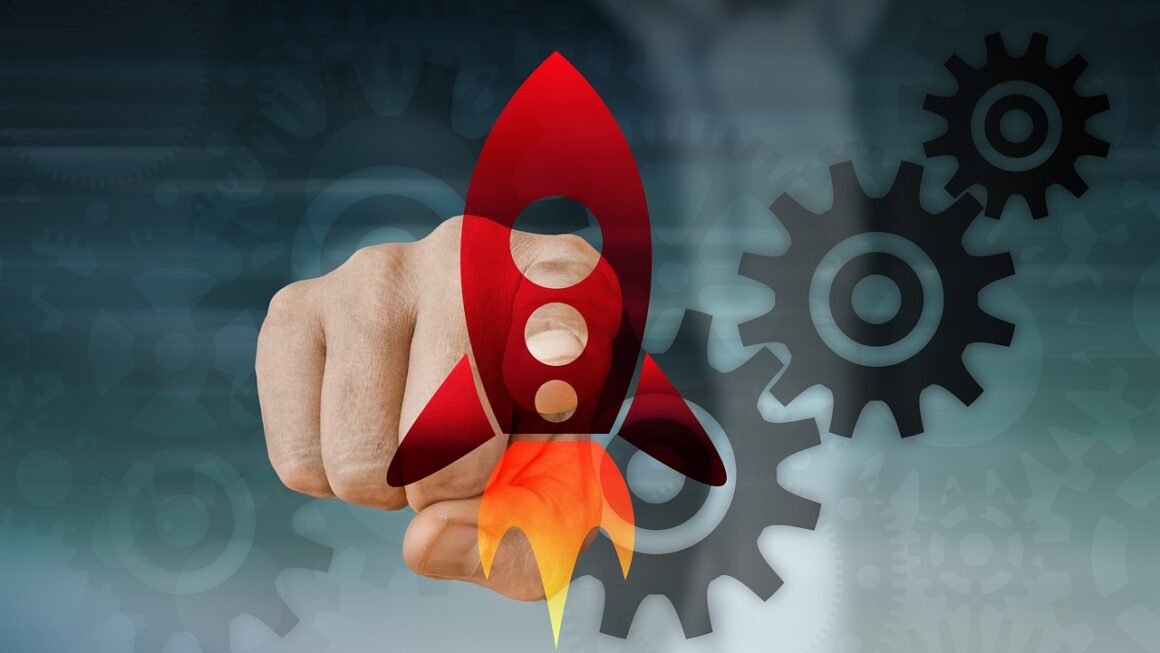In today’s fast-paced world, boosting productivity is no longer a luxury—it’s a necessity. Whether you’re a student, a freelancer, or a corporate executive, having the right tools at your disposal can make all the difference between a successful day and a frustrating one. This blog post delves into the realm of productivity tools, exploring various options designed to help you work smarter, not harder, and reclaim precious time in your day. Let’s explore how you can maximize your efficiency and achieve your goals with these invaluable resources.
Task Management Tools
Why Use a Task Management Tool?
Effective task management is the cornerstone of productivity. Without a clear system for organizing and prioritizing tasks, it’s easy to feel overwhelmed and lose track of important deadlines. Task management tools offer a structured approach to managing your workload, ensuring that nothing falls through the cracks.
- Improved Organization: Centralize all your tasks in one place.
- Enhanced Prioritization: Identify and focus on the most important tasks first.
- Better Time Management: Allocate time effectively and avoid wasting it on low-priority items.
- Increased Accountability: Track your progress and stay motivated to complete tasks.
- Reduced Stress: Minimize the mental load of remembering everything you need to do.
Popular Task Management Tools
- Asana: A versatile platform that allows teams to collaborate on projects, assign tasks, set deadlines, and track progress. Asana’s features include project timelines, dependencies, and integrations with other popular tools like Slack and Google Drive. For instance, you can create a project for a marketing campaign, assign tasks to team members, set deadlines for each task, and track the overall progress of the campaign.
- Trello: Uses a Kanban-style board to visualize tasks as cards that can be moved between different stages (e.g., “To Do,” “In Progress,” “Completed”). Trello is highly customizable and easy to use, making it a great option for individuals and small teams. Imagine you are planning a website redesign. You could create columns for “Backlog,” “Design,” “Development,” and “Testing,” and move cards representing individual tasks (e.g., “Design new homepage,” “Implement responsive layout”) through the workflow.
- Todoist: A simple yet powerful task management app that helps you stay organized and focused. Todoist’s features include task prioritization, due dates, reminders, and integrations with various platforms. You can set recurring tasks (e.g., “Pay bills” every month), prioritize tasks based on importance, and receive reminders to ensure you never miss a deadline.
Choosing the Right Task Management Tool
Consider the following factors when selecting a task management tool:
- Ease of Use: Opt for a tool with a user-friendly interface that you can quickly learn and navigate.
- Features: Ensure the tool offers the features you need to manage your tasks effectively (e.g., prioritization, deadlines, reminders, collaboration).
- Integration: Check if the tool integrates with other apps you use regularly (e.g., calendar, email, communication platforms).
- Cost: Evaluate the pricing plans and choose a tool that fits your budget. Many tools offer free versions with limited features.
- Team Size: If you need collaboration features, ensure the tool supports team collaboration effectively.
Time Tracking Tools
Understanding Time Tracking
Time tracking involves monitoring how much time you spend on various tasks and projects. This practice provides valuable insights into your work habits and helps you identify areas where you can improve your efficiency.
- Increased Awareness: Gain a clear understanding of how you spend your time.
- Improved Time Management: Identify time-wasting activities and prioritize more effectively.
- Enhanced Productivity: Focus on tasks that generate the most value.
- Better Project Planning: Estimate time requirements accurately for future projects.
- Accurate Billing: Track billable hours for client work.
Popular Time Tracking Tools
- Toggl Track: A simple and intuitive time tracking tool that allows you to track your time manually or automatically. Toggl Track offers detailed reports and integrates with numerous project management tools. You can start a timer with a single click and add details about the task or project you’re working on. Reports can then be generated to analyze where your time is spent.
- Clockify: A completely free time tracking tool that offers unlimited users and projects. Clockify’s features include project tracking, team management, and detailed reports. Teams can use Clockify to track time spent on different projects, analyze team productivity, and generate reports for client billing.
- RescueTime: A tool that automatically tracks your time spent on different websites and applications. RescueTime categorizes websites and apps based on productivity level (e.g., “Very Productive,” “Very Distracting”) and provides insights into your work habits. This can help you identify time-wasting websites and apps and make conscious efforts to reduce distractions. Studies show that users who use RescueTime see a 15-20% increase in productivity after 30 days.
Implementing Effective Time Tracking
Follow these tips to make the most of time tracking:
- Be Consistent: Track your time regularly to get accurate data.
- Be Detailed: Provide enough information about each task to understand where your time is going.
- Analyze Your Data: Review your time tracking reports regularly to identify areas for improvement.
- Set Goals: Use your time tracking data to set realistic goals for improving your productivity.
- Automate Tracking: Whenever possible, use automatic time tracking features to minimize manual effort.
Communication and Collaboration Tools
Streamlining Communication
Effective communication and collaboration are essential for teamwork and project success. Communication tools facilitate seamless interaction between team members, ensuring that everyone is on the same page.
- Improved Communication: Facilitate quick and easy communication.
- Enhanced Collaboration: Enable seamless teamwork and knowledge sharing.
- Increased Efficiency: Reduce communication bottlenecks and delays.
- Better Coordination: Ensure that team members are aligned on goals and tasks.
- Centralized Information: Store all communication in one place for easy access.
Popular Communication and Collaboration Tools
- Slack: A messaging platform that allows teams to communicate in real-time through channels, direct messages, and voice/video calls. Slack integrates with numerous other tools, making it a central hub for team communication. You can create channels for different projects, teams, or topics and share files, links, and updates. Slack bots can be used to automate repetitive tasks.
- Microsoft Teams: A collaboration platform that combines chat, video conferencing, file storage, and application integration. Microsoft Teams is part of the Microsoft 365 suite and is designed to facilitate teamwork. Teams can conduct virtual meetings, share documents, and collaborate on projects in real-time.
- Google Workspace: A suite of cloud-based productivity and collaboration tools, including Gmail, Google Docs, Google Drive, and Google Meet. Google Workspace allows teams to create, share, and collaborate on documents, spreadsheets, and presentations in real-time. The integration with Gmail simplifies communication and file sharing.
Best Practices for Communication
- Establish Clear Communication Channels: Define which channels should be used for different types of communication (e.g., urgent messages, project updates).
- Use Direct and Concise Language: Avoid ambiguity and ensure your messages are easy to understand.
- Set Communication Guidelines: Establish rules for communication, such as response times and etiquette.
- Encourage Feedback: Promote open communication and encourage team members to share their ideas and concerns.
- Leverage Collaboration Features: Use features like shared documents and project boards to facilitate teamwork.
Focus and Concentration Tools
Overcoming Distractions
In today’s digital age, distractions are everywhere. Focus and concentration tools help you minimize interruptions and stay focused on your work.
- Reduced Distractions: Block distracting websites and apps.
- Improved Focus: Stay focused on your tasks.
- Increased Concentration: Enhance your ability to concentrate.
- Better Productivity: Improve your overall productivity.
- Enhanced Mental Clarity: Minimize mental clutter and stress.
Popular Focus and Concentration Tools
- Freedom: An app that blocks distracting websites and apps across all your devices. You can create blocklists and schedule sessions to minimize distractions during specific times of the day. For instance, you might block social media websites during work hours to improve your focus.
- Forest: A gamified app that helps you stay focused by planting a virtual tree that grows while you work. If you leave the app to use other apps, the tree dies. This motivates you to stay focused and avoid distractions.
- Brain.fm: A music streaming service that uses AI-generated music to enhance focus, relaxation, and sleep. Brain.fm’s music is designed to stimulate specific brainwave patterns to improve cognitive performance.
Tips for Improving Focus
- Create a Dedicated Workspace: Designate a quiet area for working where you won’t be disturbed.
- Minimize Notifications: Turn off notifications on your phone and computer.
- Use the Pomodoro Technique: Work in focused bursts of 25 minutes, followed by a short break.
- Practice Mindfulness: Meditate or practice mindfulness exercises to improve your ability to focus.
- Take Regular Breaks: Take short breaks throughout the day to avoid burnout and maintain focus.
Conclusion
Productivity tools are essential for anyone looking to maximize their efficiency and achieve their goals. By leveraging the right tools for task management, time tracking, communication, and focus, you can streamline your workflow, minimize distractions, and improve your overall productivity. Take the time to explore the various options available and choose the tools that best fit your needs and preferences. Remember, the key is to use these tools consistently and adapt them to your specific work habits to achieve lasting results. Start experimenting today and unlock your full potential!



